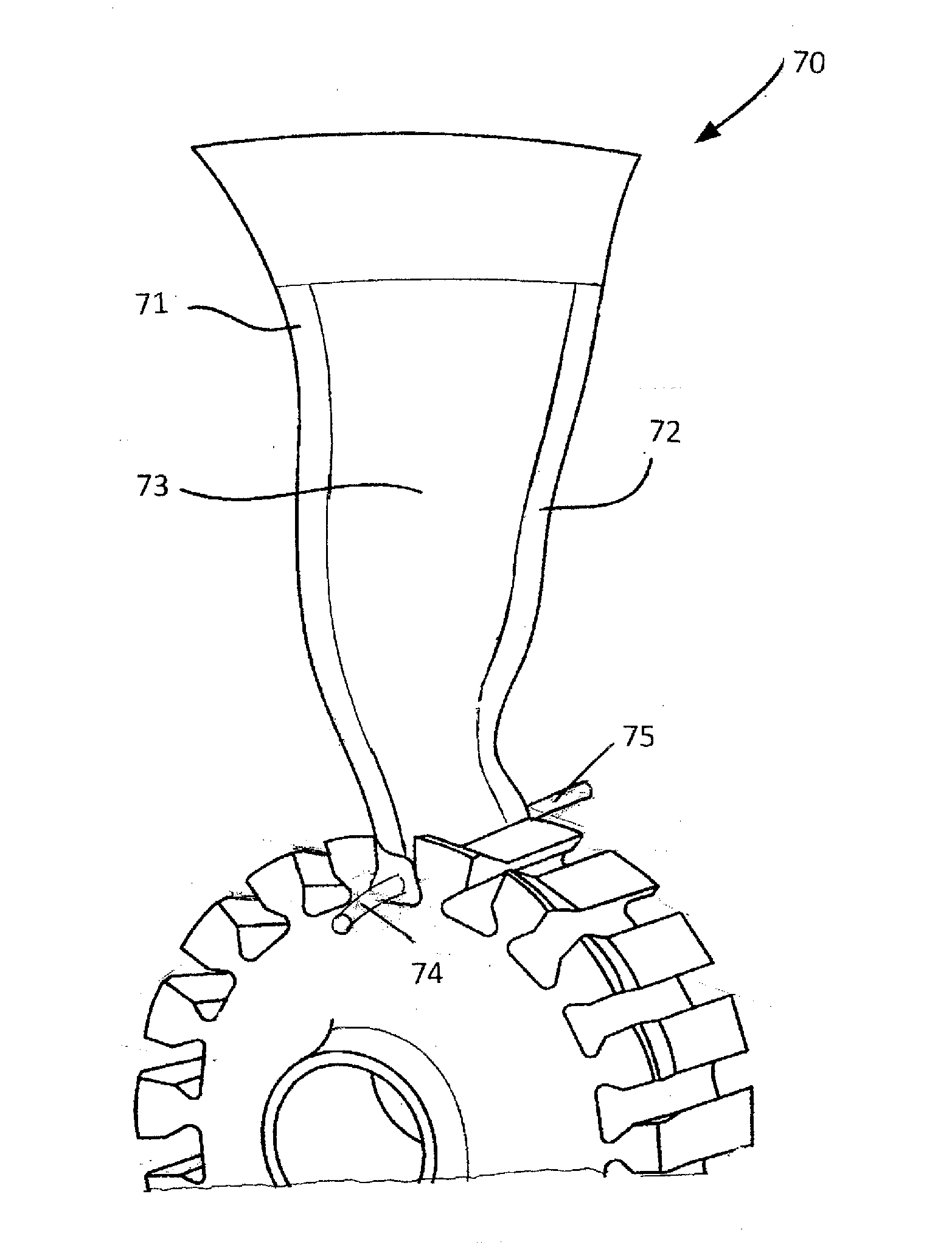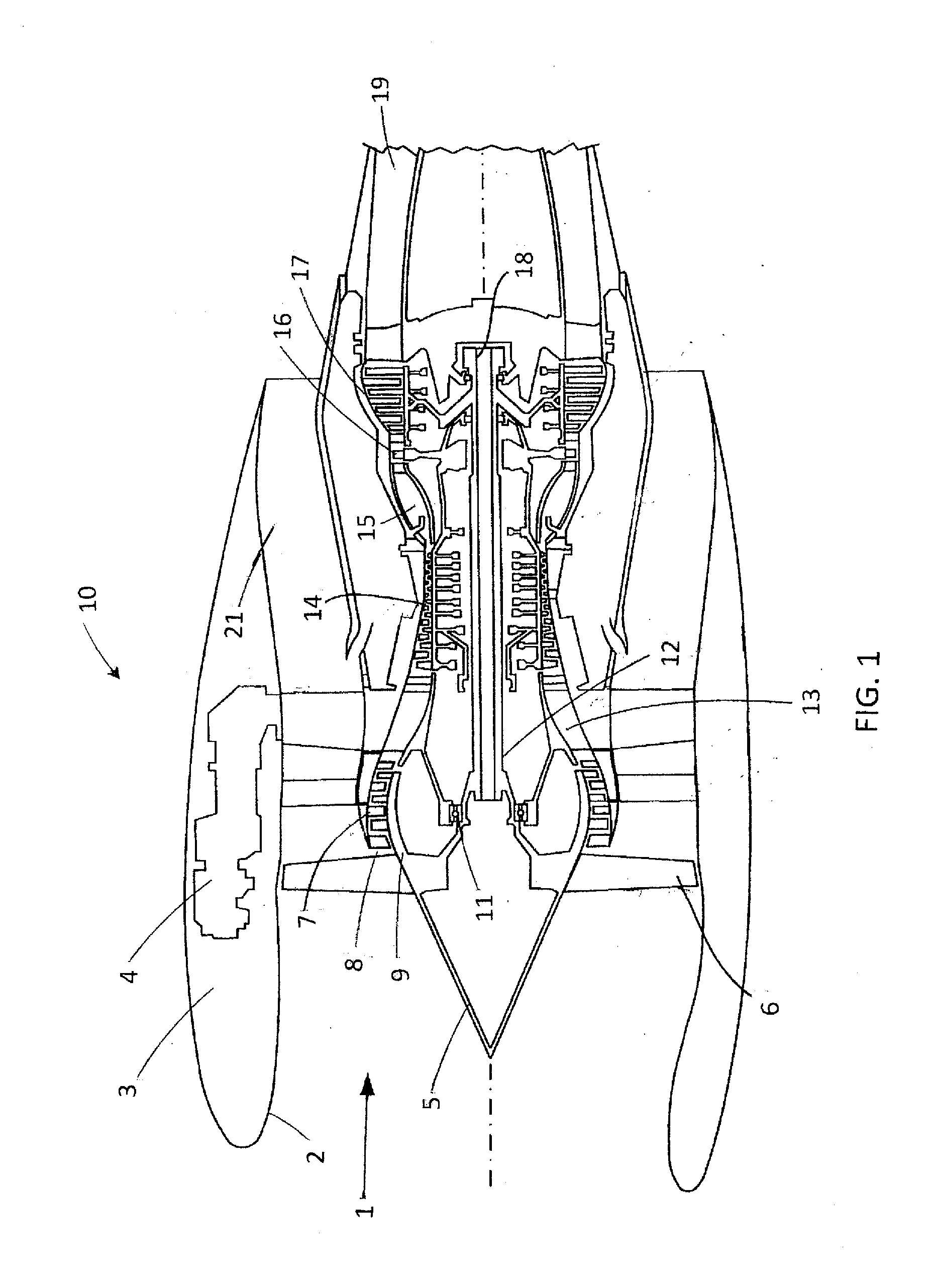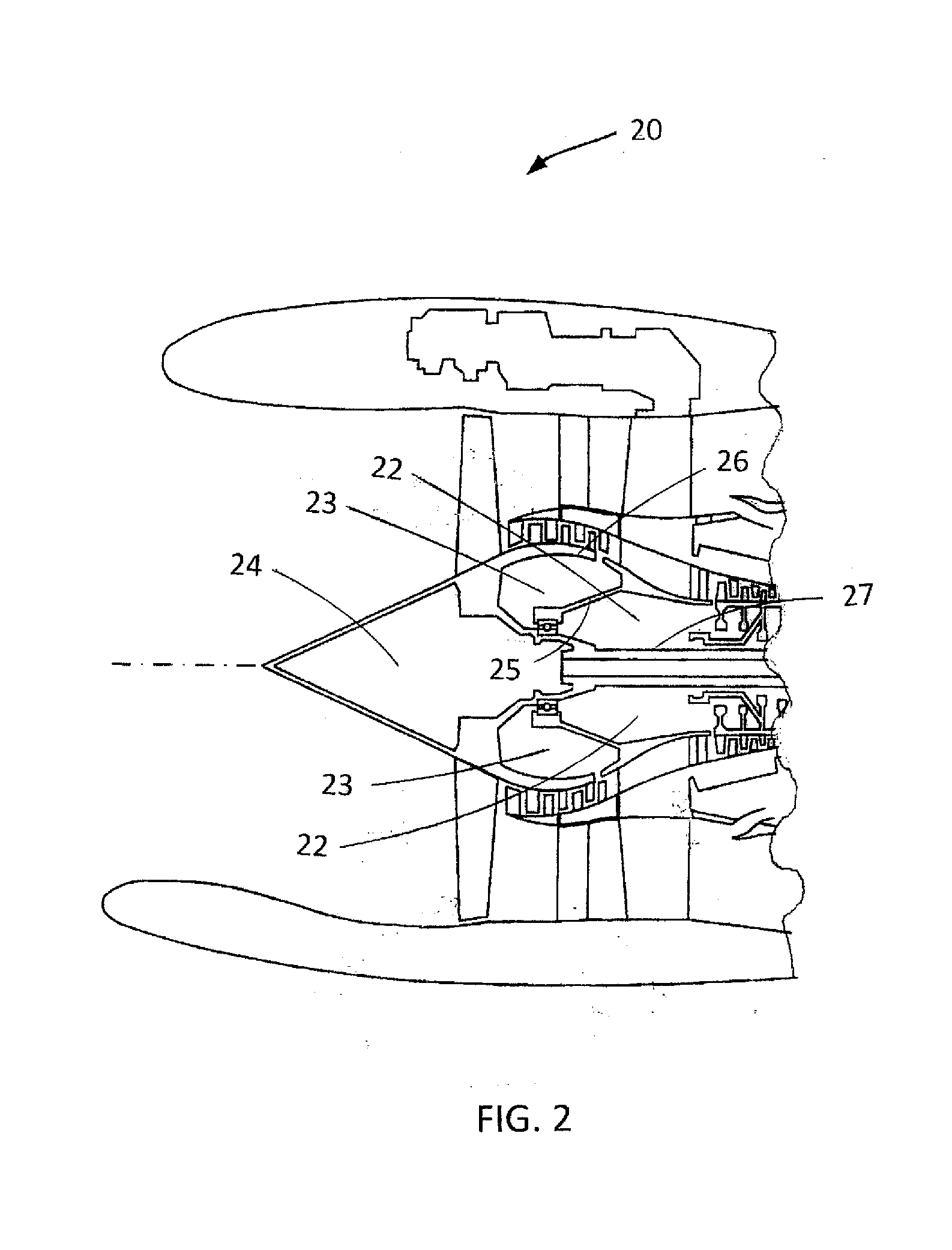Embedded Turbofan Deicer System
- Summary
- Abstract
- Description
- Claims
- Application Information
AI Technical Summary
Benefits of technology
Problems solved by technology
Method used
Image
Examples
Embodiment Construction
[0045]A cross-sectional diagram of a typical prior art turbofan aircraft engine of high bypass ratio 10 is provided in FIG. 1. Features of the typical prior art turbofan engine shown in FIG. 1, 10, starting at the inlet entrance and continuing to the exhaust end, include: inlet air flow, 1, inlet entrance duct, 2, nacelle, 3, aircraft / engine structural support, 4, engine spinner, 5, engine fan blades, 6, low pressure compressor, 7, low pressure compressor air inlet, 8, low pressure compressor casing, 9, forward bearing, 11, central drive shaft, 12, low pressure compressed air duct, 13, high pressure compressor, 14, combustion chamber, 15, high pressure turbine, 16, low pressure turbine, 17, aft bearing, 18, combustor exhaust duct, 19, and bypass air duct, 21. When icing is occurring inside a high bypass ratio turbofan engine at high altitudes near tropical storms, the ice attaches itself to internal exposed surfaces including the rotating engine spinner, 5, rotating engine fan blade...
PUM
| Property | Measurement | Unit |
|---|---|---|
| Pressure | aaaaa | aaaaa |
| Power | aaaaa | aaaaa |
| Electrical conductor | aaaaa | aaaaa |
Abstract
Description
Claims
Application Information
 Login to View More
Login to View More - R&D
- Intellectual Property
- Life Sciences
- Materials
- Tech Scout
- Unparalleled Data Quality
- Higher Quality Content
- 60% Fewer Hallucinations
Browse by: Latest US Patents, China's latest patents, Technical Efficacy Thesaurus, Application Domain, Technology Topic, Popular Technical Reports.
© 2025 PatSnap. All rights reserved.Legal|Privacy policy|Modern Slavery Act Transparency Statement|Sitemap|About US| Contact US: help@patsnap.com



